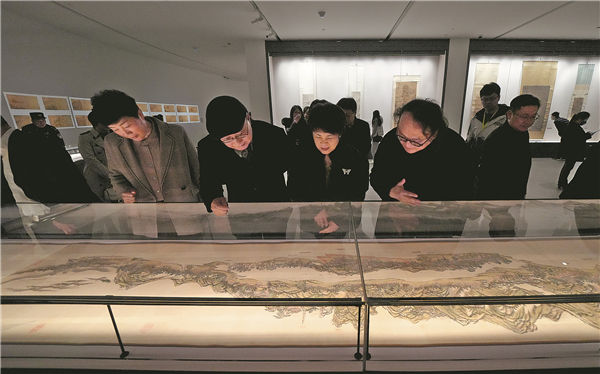

What has caught the most attention at the exhibition are 10 works, some of which date back to the Northern Song Dynasty (960-1127), when Chinese landscape painting developed a fully-formed, monumental style, often called "a panoramic-view structure".
The others were produced in the Southern Song Dynasty (1127-1279) when Hangzhou became the imperial capital and attracted an influx of artists, and they, especially those serving in the royal court, formed a delicate approach to depicting subjects.
The exhibition seeks to immerse visitors in the natural landscapes and highly aesthetic atmosphere that artists living centuries ago experienced in Hangzhou and the Jiangnan region (the area south of the lower reaches of the Yangtze River) as a whole, as they journeyed, created and socialized there.
Gao Shiming, dean of the China Academy of Art, says, "When I stood in front of those Song paintings, I couldn't help but wonder how painters back then were able to re-create the mood and circumstances before their eyes with their brushes. There is a distinctive approach to understanding the logics of the world."
He says that when Song artists layered out ranges of mountains and peaks and forests, they also sought to present the infinity and tranquility of the universe; and when they rendered liveliness to birds and flowers, they were in fact hailing the magic of nature to create lives.